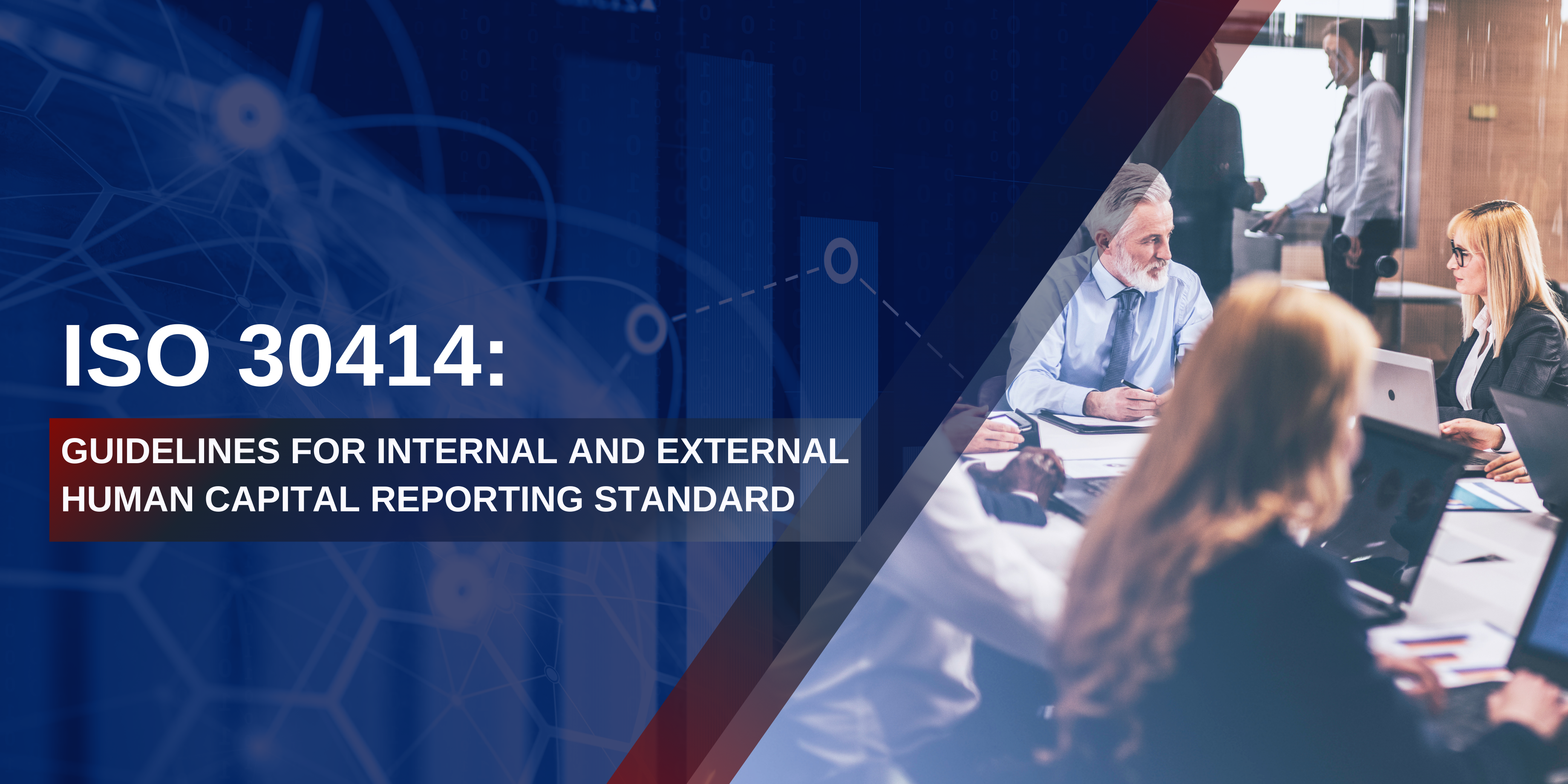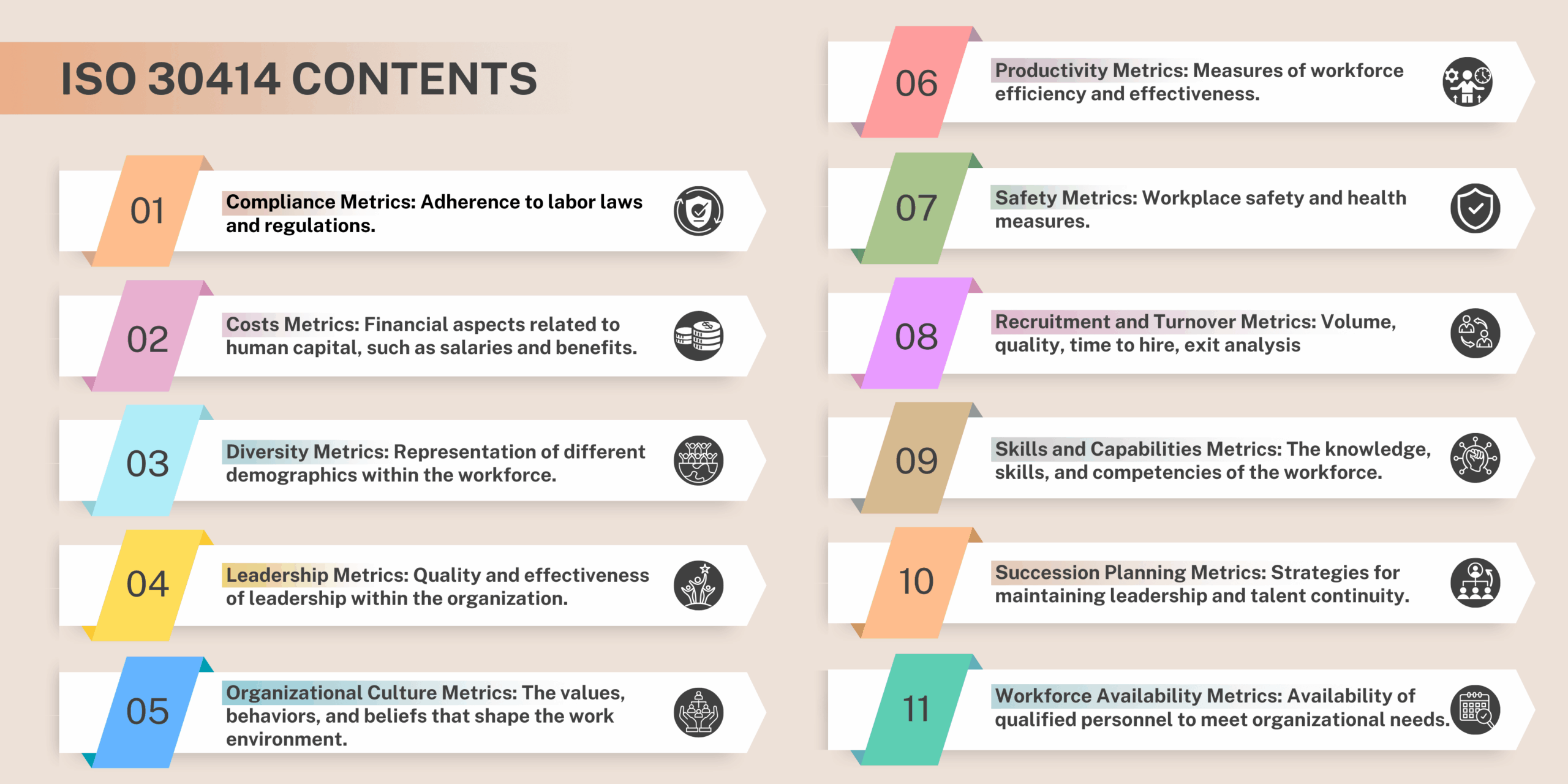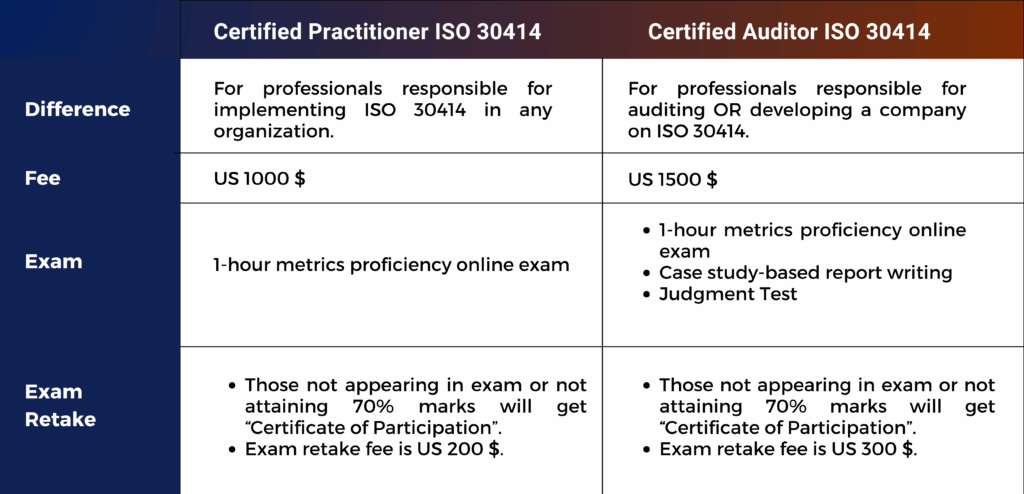ISO 30414: GUIDELINES FOR INTERNAL AND EXTERNAL HUMAN CAPITAL REPORTING STANDARD
Guidelines for Internal and External Human Capital Reporting Standard

Why Human Capital Disclosure is Important in ESG Context ?
Global economy is transforming from physical to intellectual capital. According to Ocean Tomo Intellectual Capital Equity USA, In 500 Fortune Companies, 90% of value creation in S&P 500 firms is attributed to intangible assets. Human capital cost consumes lion’s share of intangible assets. With the rising investment in workforce, shareholders are keen to know as how this investment impacts the organization bottom line. There is a swell of interest by investors in human capital measurement and impact on the sustainability of organization.

With the emergence of Environmental, Social, and Governance (ESG) framework, human capital has become important for investment analysis, both from social and financial impact perspective. Human capital is now a key consideration for most companies around the world.
It is recognized as one of the most important drivers of competitiveness, value creation, and sustainable competitive advantage. Worldwide investors are engaging with companies to improve the workforce risk disclosure to cope with rapid environmental and technological change. CEOs are under growing pressure from investors, government, regulators, customers, employees, and communities, to become more transparent in their investments and outcomes.
Top 6 Reasons for Human Capital Disclosure
01
Organizations have a fiduciary duty to communicate existing and potential future risks deemed material to their business
Human Capital is clearly material to virtually any organization’s current and future success, therefore a fiduciary responsibility exists to provide greater information to shareholders, creditors
and others.
02
There is broad agreement by investors, boards directors, CEOs, CFOs, governments, human resources and workers
That human capital has an impact on organizational success. CEO’s state “Our people are our most valuable asset,” or “It all starts with people.” Shouldn’t such asset information be disclosed to key stakeholders.
03
Companies need smart, effective employees to compete
Understanding and quantifying human capital is critical for success and future growth internally within the organization.
04
The current disclosure gap obscures talent management effectiveness and material human capital risks to investors
With no visibility into utilization of a firm’s single largest expense, investors must rely on social media tidbits or simply make judgements on no information at all.
05
What gets measured gets managed
For most organizations, human capital is not well measured except as a cost. This suggests unbalanced reporting with only the cost side of the equation represented and the value-add
investment side missing.
06
Regulatory securities commissions, require extensive disclosure of all major assets
Including financial assets, physical assets, and technological assets such as patents. However, there is minimal disclosure of human capital which is, for most organizations, their largest annual operating expense.
What is ISO 30414?
ISO 30414 is an international standard titled “Human resource management — Guidelines for internal and external human capital reporting.” It provides a set of guidelines for organizations to report on various aspects of their human capital, both internally and externally. The standard aims to help organizations measure, manage, and report on their workforce effectively, with a focus on improving transparency and accountability. ISO 30414 provides a framework for reporting on 11 aspects of human capital, such as
01
02
03
04
05
06
07
08
09
10
11

What are Benefits of ISO 30414?
01
ISO 30414 provides the first and most widely accepted roadmaps for voluntary, strategic and systematic processes that improve outcomes and experiences. The primary focus of the human capital disclosure is to determine the long-term health of a business, thus mitigating the risk for the shareholders as well as all stakeholders including donors, regulators, employees, compliance agencies, customer, public and the community.
02
It disrupts the way companies think, value and report on their human capital, and deliver what investors look for; sustainable growth and returns. It will enable financial investors to credibly assess the quality of HR mechanisms and processes between competing companies, include this information in respective financial evaluation models, and measure its impact on organization’s bottom line.
03
With the new focus on human capital as an asset, the funds organizations budget to engage people are increasingly becoming considered an investment with a desired ROI, creating a new demand for voluntary, sensible and auditable practices
04
By connecting the dots between the organization’s brand, culture, and objectives, with the practices used to engage all stakeholders, leaders can not only improve performance through efficiencies but create better experiences for all stakeholders.
Learning Options
Option 1: Self Paced Individual Online Training
- Fee is US 1,000$
- Can be subscribed anytime
- 8 recorded videos of one hour each
- 8 assignments of metrics computation and guidance via email
Option 2: Instructor Led Individual Online Coaching
- Fee is US 1500$
- Dates will be worked out with consultation of coach
- 8 interactive online session of one hour each via zoom
- 8 assignments of metrics computation via email and guidance via zoom
Learning Pack
- Soft copy of ISO 30414 (HR Metrics will purchase and provide)
- Soft copy of ISO 30400: HR Vocabulary
- ISO 30414 Training Manual
- ISO 30414 Metrics computation exercises
- Online Tuition classes
Types of Certifications
1. There are 2 types of certifications.
a. ISO 30414 CERTIFIED PRACTITIONER: This is meant for professionals who are interested in implementing ISO 30414 in organization.
b. ISO 30414 CERTIFIED AUDITOR: This is meant for professionals who are not only interested in implementing but also want to become auditor or consultant on ISO 30414.
2. There is no difference in the fee structure for both certification




